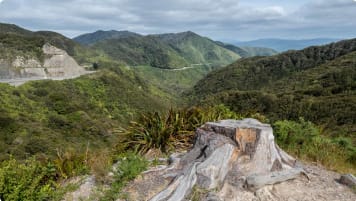Dunedin Gold Rush
Article explores for Senior and mature traveller couples or solo travellers in a small group tour, the history of gold mining during the late 19th century rush era in Otago, a region of New Zealand located in the lower half of the South Island, the regional capital is Dunedin.
16 Jan 21 · 12 mins read

Dunedin Gold Rush
By Marco Stojanovik
A young prospector by the name of Gabriel Read would gain grand esteem and rewards, forever changing the economic and social life of Otago, New Zealand, when he discovered gold near Lawrence on the way to Dunedin on 23 May 1861. At the time, Otago was a young pastoral province with half a million sheep nibbling the countryside, the city of Dunedin flourishing off the back of wool exports. Some gold had been found in the region but nothing to spark much interest from the public.
Within months of Gabriel’s find, however, the word was out and thousands of gold miners were flocking to the valley still known today as Gabriel’s Gully. The Otago gold rush had begun. Before long vast amounts of wealth were flowing through the region, bankrolling the city of Dunedin, and altering the development of the entire national economy.
This article explores the history of Dunedin and gold mining during the 19th century rush era in Otago, a region of New Zealand located in the southern half of the South Island. It is intended as background reading for Odyssey Traveller’s tour of New Zealand’s South Island. As part of this tour, we spend three days in Dunedin and visit the original gold strike location at Lawrence. Much of the information from this article is drawn from the first chapter of Bruce Ansley’s Down South: In Search of the Great Southern Land. These articles support mature and senior travellers, whether a couple or solo traveller, by providing knowledge and appreciation of the culture, history and landscape setting of the places visited and considered on Odyssey Traveller small group tours. Tours have been offered and operated since 1983 to like minded groups of people who are curious about various destinations.
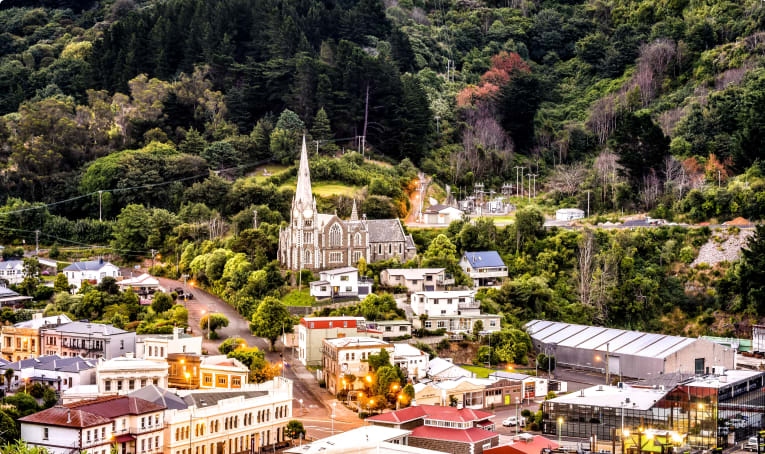
The Founding of Dunedin: “The Edinburgh of the South”
The town of Dunedin was founded in 1848 at the head of the Otago Harbour by the Scottish Free Church. Charles Kettle, surveyor for the New Zealand Company, planned the city to be “the Edinburgh of the South”, based widely on the admired layout of Scotland’s capital. The Octagon (Dunedin’s town square) was placed at the heart of the city, with Moray Place shaping the outer part of its thoroughfares and the Town Belt – a strip of natural bush and parks – separating the city centre from its hilly suburbs.
A striking, “Romantic” design was produced by emulating the characteristics of Edinburgh. However, its grid pattern resulted in both grand and quirky streets as they were constructed without any consideration of the actual underlying topography. Its most famous result is Baldwin Street, recognised by the Guinness Book of Records as the world’s steepest street. At its maximum steepness, the slope of the 350 metres long street is about 1:2.86 – that’s an incline of 35% of 19 degrees. In other words, for every 2.86 metres you cover horizontally, the elevation rises a metre.
Baldwin’s Street remarkable location comes with equally remarkable events today. Beginning in 1988, each summer over a hundred participating athletes complete a laborious foot race up and down the slope in an event known as the Baldwin Street Gutbuster. And every July, over 75,000 Jaffas (red-shelled spherical chocolates) are rolled down from the top of the hill in the Jaffa Race charity event. Each Jaffa is numbered and sold for $1 each, with prizes for the people who bought a ticket for the wining Jaffa and funds raised going to charity.
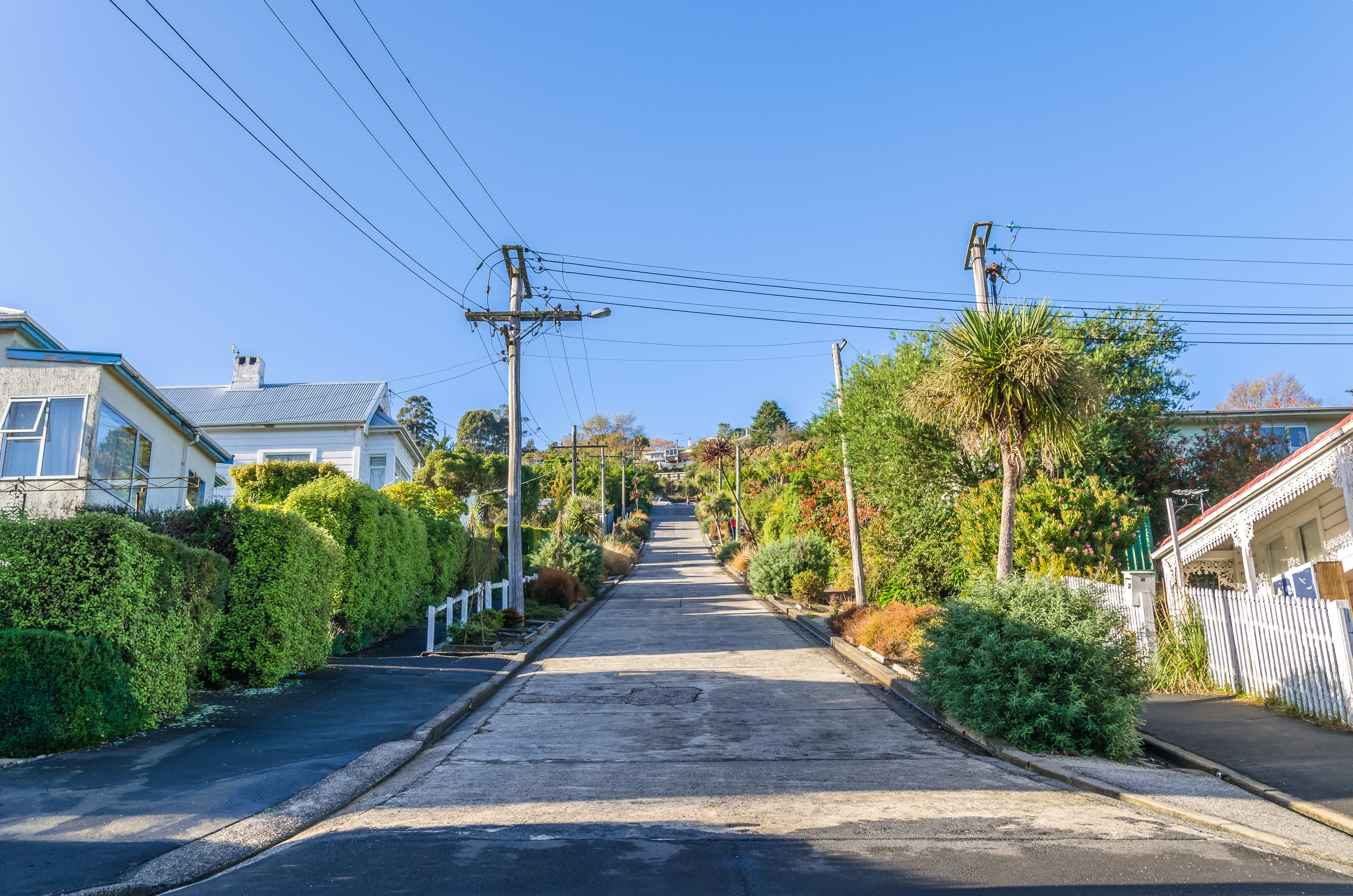
Previous Gold Finds in Otago
Māori had long known that gold existed in Central Otago but could see no sensible use for it. Too soft for tools and no good for weapons, they instead relied on greenstone for these purposes. Meanwhile, greenstone, obsidian, and bone carving were used for jewellery.
By the 1850s, gold had already made fleeting appearances in European chronicles of the region. The first known European Otago gold find was at Goodwood, near Palmerston in October 1851, and traces were found in the Molyneux (today Clutha) River in the early 1850s. However, finds were of very small amounts with no ensuing “rush”.
In December 1856, Charles Ligar, former Surveyor-General of New Zealand, was searching for grazing land when he found gold in the bed of the Mataura River while crossing at Tuturau near Dunedin. His reports that he believed there was ‘a remarkable goldfield in the neighbourhood’ however stirred minimal interest in the town.
The Problem of Gold
The gold discovery at Tuturau confronted the town of Dunedin with two social problems. First, there was the question of who would do the work if a goldrush resulted and the working class ran off to the goldfields. The middle class and the fledging aristocracy would be left without labourers, without cooks and gardeners and people to fix things.
The second problem was that of maintaining social order. Southern towns with strong ties to the Home Country retained a hierarchy, assessed by the suburbs people lived in, the schools they went to, the accents they spoke in, and the clubs and societies they belonged to. A gold strike threatened this order. Those seen ‘unworthy’ could easily strike it rich and erode the proper social structure.
At the time, the Dunedin city establishment was headed by William Cargill, a Scotsman who had become Otago’s superintendent when the settlers won self-government in 1853. He found the very idea of a gold rush distasteful, in conflict with his two main goals of maintaining order and imposing religious adherence. Presbyterian values stood staunchly against gambling, and since goldmining was essentially a gamble, there was no place for gold in the Presbyterian ways of things. So, the Cargill led establishment swiftly rejected and supressed Ligar’s report.
A Reward is Promised
The Otago Witness helped to quash the idea of a gold rush, deriding early accounts of gold discoveries. Yet, the evidence soon began to pile up here and there and so, six months after Ligar’s discovery, the newspaper changed its view. In order to address the rumours and establish a body of evidence one way or another, the paper petitioned the Otago Provincial Council for a handsome reward for anyone who could prove a substantial find.
The Provincial Council, notorious for its short arms and long pockets, was eventually poked into gear. They promised a £500 reward for “the discovery of a Remunerative Goldfield within the Province of Otago”. Part would be paid when 100 ounces had been brought into Dunedin, the balance when production hit 500 ounces. To put that into perspective, 500 ounces would be worth about $1 million today.
The Lindis Gold Rush
Otago’s first major goldfield would not be established near Tuturau but further north near the Lindis Pass. A small-scale gold rush broke out after the road maker Samuel McIntyre struck gold. A veteran prospector in California, he had recognised the similarity of the regions’ country, taking to picking and panning in his spare time. Within a few days of his discovery, he and his mates had amassed four pounds of gold.
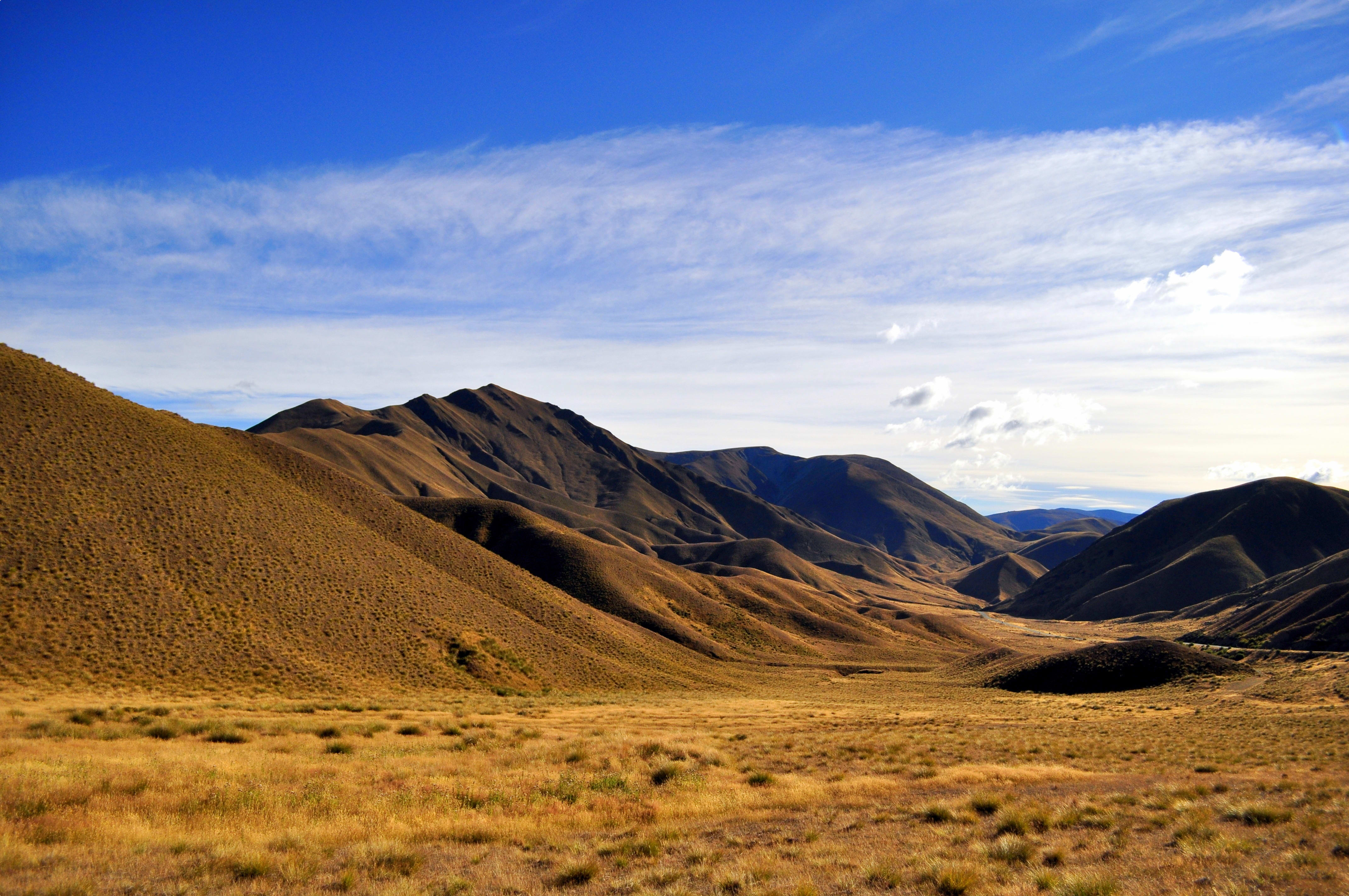
News of the diggings soon spread and by a few weeks later, in April 1861, 400 diggers were working in the field there. However, no one apparently got rich in these new diggings – isolation, an extreme climate, and expensive provisions all contributing to its failure.
Just two months later the Lindis was deserted, something much bigger luring the miners away. A month after the area had reached its peak, Gabriel Read, an Australian, had discovered gold elsewhere at what became Gabriel’s Gully in Central Otago. A truly enormous gold rush was gathering momentum.
‘Black Peter’: A Forgotten Prospector
Gabriel Read was not however the first to find gold in the area that was to become New Zealand’s fabled Tuapeka. That honour went to Edward Peters, aka ‘Black Peter’.
A native of Bombay (now Mumbai), Black Peter arrived in New Zealand as a cook on the sailing ship Maori in 1853 and was promptly thrown in jail for desertion. After six weeks, he was released and began venturing towards Central Otago, eventually taking up residence in Glenmore. Formally a goldminer in California, here he worked as a shepherd, a hut-builder, and bullock driver.
In 1857, while on one of his sledging excursions to deliver food to other shepherds, he took a team of bullocks across the Tuapeka River. At one point he stopped for a drink of water, and a thought crossed his mind to try for gold by scooping up some silt in his pannikin. Sure enough, he was rewarded with a rough speck of gold.
On other occasions he panned in nearby locations, again finding prospects. This included a notable find at a place called the Woolshed, the first large find in Otaga. Taking the sample to Dunedin, officials declared it the best yet brought to town, indicating a workable goldfield.
Peters was never secretive about his finds, always willing to talk gold and show the locations of where he found it. Many people knew he’d found gold at the Woolshed and the newspapers often referred to the Tokomairiro goldfield as ‘Black Peter’s territory’. Yet, no one took much notice. And when Peters, believing the £500 reward for discovering gold near Dunedin belonged to him, twice applied to the Provincial Council for the bounty, he was both times refused.
Eventually, almost 20 years later in 1885, he was awarded a smaller bonus of £50 from the council on condition that the public contributed the same amount. The sum was duly raised; but why were his services not sooner publicly recognised?
One reason Peters’ efforts were overlooked was his lack of expertise. He did have mining experience from his time in California, but it was limited to the piece of equipment known as a goldminer’s cradle. He thus knew something of the nature of the wash dirt in which gold was usually to be found but had limited experience of the practicalities of turning such opportunities into a strike. So, he could not prove that the deposits were extensive enough to be economically worked.
Bruce Ansley also suggests that racial attitudes played a part. As an Indian man Peters was seen to be “from some godforsaken corner of the globe that had taken the British absolutely ages to get into working order.” He was looked down upon as inferior, deemed incapable of the services he was striving to be acknowledged for.
Gabriel Read’s Discovery
Thomas Gabriel Read, on the other hand, would later receive £1000, double the amount originally promised by the Provincial Council, for his discovery and contribution to the ensuing gold rush. A much more accessible hero than Black Peters, he came from a wealthy Australian family, was well educated, and talked to the emergent middle class in Otago in their own ‘civilised’ language.
A young prospector, he arrived in the Otago in January 1861, after having worked on the Californian fields and on the diggings in Victoria. He had come to New Zealand on a whim, having hopped aboard a passing Port Chalmer-bound ship in Hobart, hearing heard rumours of the discovery of gold in Mataura. However, his inquiries discouraged him of finding gold, and he only decided to stay in New Zealand after being offered a job on his cousin’s farm.
Before long, the Lindis discovery had drawn him back to Otago, arriving in April 1861. Taking Peters seriously, he followed the man’s footsteps, setting out to Woolshed Creek at Glenore in the Tuapeka district. He brought with him a tent, blankets, spade, butcher’s knife, food, and of course his tin dish for panning gold.
There he met a shepherd named George Munro, who took him in, fed and housed him for a night, and after the breakfast the next morning showed him to the top of an adjoining gully. It was here, on 20 May, 1861, on the banks of the Tuapeka River near Lawrence, that Read found buried just two and a half feet underneath gravel “gold shining like the starts in Orion on a dark frosty night”.
In a letter on 23 May to the Otago Superintendent, Major Sir John Richardson, he confirmed his discovery, explaining that he was able to collect seven ounces of gold over a ten-hour period. He could have easily kept his discovery a secret and enriched himself beyond any dreams of the time simply by working a few weeks on his own, but he felt it his duty to report his findings.
In the letter, Read expressed concern that if he were to brag about his findings, the plain would be deserted by all adult inhabitants in search for gold the very next day and the farmers would suffer seriously from a neglect of operations. However, he encouraged the superintendent to forward his letter to The Otago Witness, if he believed the news to be “of any benefit to the public interest”.
Richardson did just this, and on 6 June, the Witness declared the findings, documenting a ten-day-long prospecting tour Read had made. No one was at first much interested through, and to Read it seemed the rush he expected would not eventuate.
Then on 28 June, John Hardy, a provincial councillor, brandishing five pounds of gold, stated that he and Read had prospected country “about 31 miles long by five broad, and in every hole they had sunk they had found the precious metal”. With this statement Dunedin went from a city of sceptics to one of believers.
Gold Fever
Fever broke out as every man who could walk or ride left Dunedin to try their luck on the Tuapeka field. Taking a shovel, digging a little, swilling the dirt in a pan full of water, and with luck striking it rich certainly beat mending a fence, or carting wood, or swinging a pick on a primitive road.
Of course, the dire predictions came true: the cost of goods and services doubled, Dunedin was stripped of its labour force, and public works and private enterprise ground to a halt. However, as word of the discovery spread and thousands of diggers rushed into the province, the city and its businesspeople would soon be raking in unheard of amounts of wealth.
At the beginning of August there were already 2,000 diggers camped on Read’s location. From Gabriel’s Gully men spread into neighbouring valleys, striking further finds and adding to the excitement. By Christmas, 14,000 prospectors were on the Tuapeka and nearby Wairpori fields, most having come via the Californian and Victorian rushes that were petering out by then.
By 1870, Dunedin had become unchallenged as New Zealand’s largest and richest city. An exotic mix of races made up its population: Europeans included French immigrants, Germans, Belgians, Danes and many more; vast amounts of Chinese people flocked in to mine; and the entire southern hemisphere was represented.
The miners bankrolled Dunedin with the gold they dug up. Vast amounts of wealth brought in mercantile companies, banks, and a building boom on a monumental scale. The nation’s finest architects were drawn to the city, designing the nation’s finest buildings and grand houses spread across the city scape. Railways were built, harbours constructed, and the port grew rapidly.
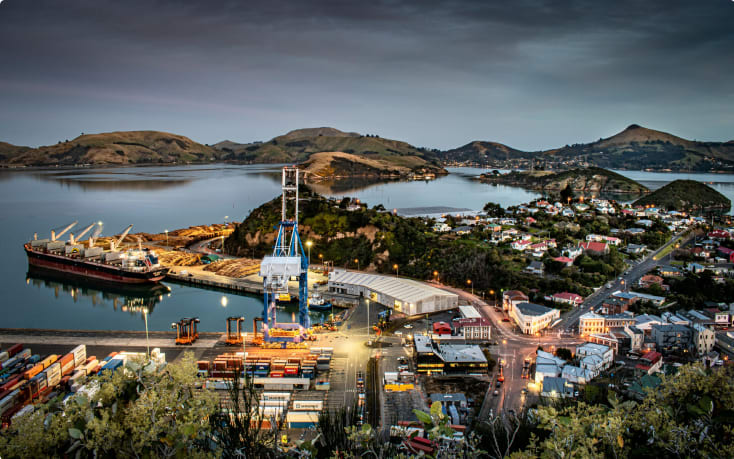
By the end of the gold boom, in the 1880s, Dunedin had become the most magnificent city in the country. The downtown area was jammed with hotels, banks, insurance companies, breweries, and theatres built in architectural styles of all sorts – Gothic, Renaissance, Italiante, Elizabethan, Jacobean, and Georgian.
Commerce and industry boomed during this period. With entrepreneurs attracted by the gold, they created abundant jobs in engineering, woollen mills, clothing manufacturing, importing and warehouses, and the rich people steadily got a great deal richer. Many manufacturing, distribution and retail companies that later went national had their New Zealand bases in Dunedin and were central to the young nation’s economy, a major boost to its development.
Heritage City
Eventually the fever subsided, and the focus shifted in Dunedin to sheep faming. Miners left in large numbers for the new West Coast goldfields, the entrepreneurs followed, and the city, despite its charms, dwindled.
After the Second World War, prosperity and population growth did revive, however. And since the 1990s, Dunedin has re-invented itself as a ‘heritage city’ with its main streets refurbished in Victorian style alongside its original historical architecture. The cityscape today now glitters like gold, evoking its former status as New Zealand’s preeminent city.
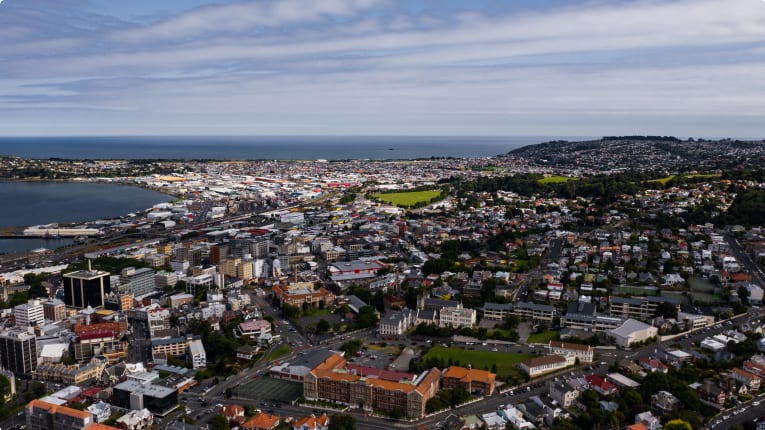
Tour of Dunedin
Odyssey Traveller conducts a tour of Dunedin as part of our tour of New Zealand’s South Island. We spend three days in and around the city, exploring its historic buildings and ports, visiting its museums, and journeying to the original gold strike location at Lawrence.
This small group tour will be accompanied by an Odyssey tour guide and joined by expert local guides who will impart their knowledge about the history, Maori culture, and landscapes of places we will visit. Our itinerary gets off the beaten track, following the east coast of the South Island through to the West coast, before returning to Christchurch.
This particular tour has periods of free time built into the itinerary, allowing you to explore each destination at your own pace, and choose from a variety of available activities. This way, we make sure that there is something to enjoy for every kind of traveller.
Odyssey Traveller has been conducting educational tours since 1983 designed for small groups of mature and senior travellers, focusing on the history, culture, wildlife, and architecture of our destinations. Our small group tours are typically between 6 to 12 people, and are cost inclusive, encompassing accommodation, attraction entries, and transport. For more information, click here, and head to this page to make a booking.
Articles about New Zealand published by Odyssey Traveller:
- Questions about New Zealand
- Definitive Guide to Auckland
- Christchurch
- Queenstown
- Milford Sound
- Fiordland National Park
For all the articles Odyssey Traveller has published for mature aged and senior travellers, click through on this link.
External articles to assist you on your visit to Dunedin and New Zealand:
Related Tours

14 days
Aug, Sep, Oct, Nov, Feb +1Small group tour of New Zealand's North Island
Visiting
Escorted 13 day small group tour of the East coast of New Zealand’s North island. Off the beaten track, for like minded people curious about history, culture, wine and landscapes. Your tour director and local guides share their knowledge with you the traveller on this New Zealand tour for senior travellers.
From A$11,495 AUD
View Tour
17 days
Feb, Mar, OctSmall group tour of New Zealand's South Island
Visiting
Escorted 17 day small group tour of the West and East coast of New Zealand’s South island. Off the beaten track, for like minded people curious about history, culture, wine and landscapes. Your tour director and local guides share their knowledge with you the traveller on this New Zealand tour for senior travellers.
From A$13,365 AUD
View Tour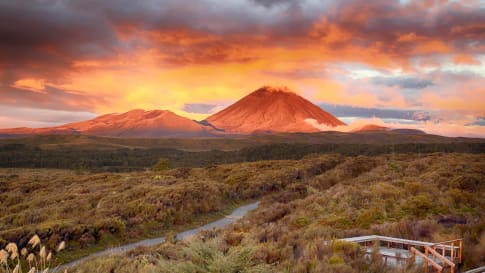
14 days
Mar, Sep, NovSmall group walking tour of New Zealand
Visiting
Escorted 14 day small group walking tour of New Zealand. Off the beaten track, for hiking fit like minded people curious about history, culture wine and landscapes.
From A$13,995 AUD
View Tour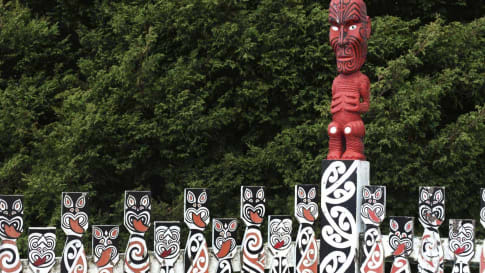
17 days
Oct, Feb, Apr, Sep, MarNew Zealand: An Odyssey Down Under
Visiting
A guided small group tour of both the North island and the South island. Your travel itinerary includes Auckland, Rotorua, Milford Sound, Queenstown and Christchurch. Maori culture also forms part of the journey to provide a memorable New Zealand tour experience.
From A$12,595 AUD
View Tour